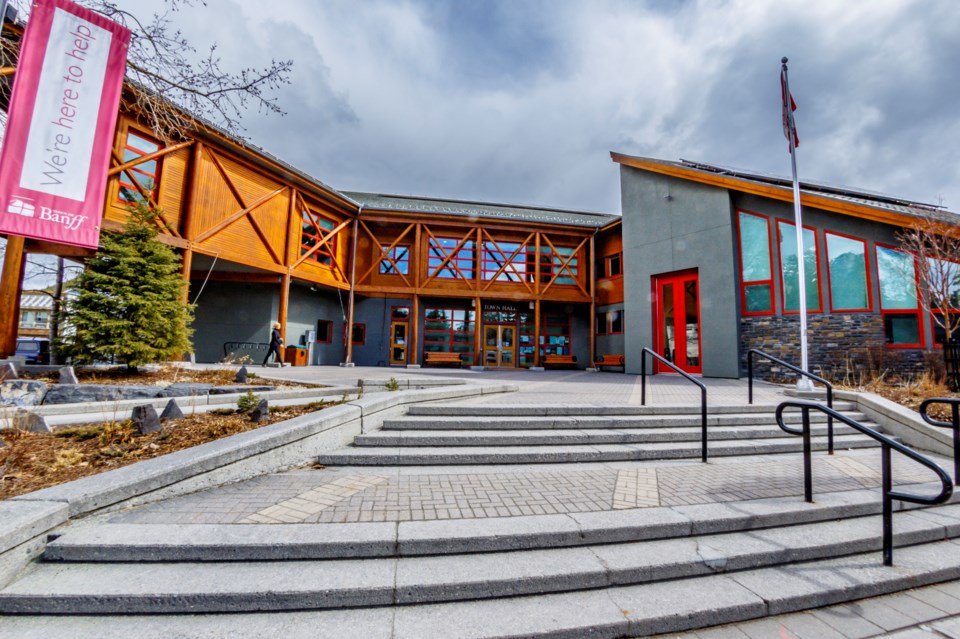BANFF – The Town of Banff is exploring ending single-family zoning and limiting development of other very large homes in a bid to deal with the tourist town’s critical housing crunch.
The governance and finance committee has asked the planning department to draft a discussion document for potentially removing single-detached housing from the land use bylaw and a report outlining options for creating a maximum dwelling unit size for all housing types.
The committee also wants to look at the pros and cons of amending the land use bylaw to make accessory dwellings such as basement suites and rebuilding garages, for example, a permitted use.
“It’s about trying to make housing easier to build and build housing that serves community needs,” said Emma Sanborn, development planner for the Town of Banff.
The 2019 Bow Valley regional housing needs assessment determined single-detached homes were not meeting the existing or future housing needs within the Banff townsite and were not helping with housing affordability pressures.
The study concluded the shortage of land in the national park townsite is putting even more pressure on the need to consider densification in all new residential developments, and that a change in municipal planning policy would be required to affect meaningful change.
Mayor Corrie DiManno voiced passionate support for elimination of new single-detached homes.
She said there are 70 people on the wait list for the municipality’s for-purchase development, The Aster, and 209 people are waiting to get into the Ti’nu rental development.
“I do not see a future in Banff where we continue to allow single-detached homes. We are four square kilometres and we are in a housing crisis,” she said.
“This is an absolutely all-out emergency so when redevelopment occurs it needs to be with the best and most efficient use of our precious land … and this does not include single-detached homes.”
DiManno said Banff is at a stage where residents need to embrace densification for the community.
“It’s better for our climate, it’s better for affordability and it makes for more vibrant public realms,” she said.
“I am ready to say goodbye to single-detached homes in our community and I am ready for us to usher in a new era of more sustainable housing.”
Since the rewrite of the land use bylaw in 2012, duplex housing has been a permitted use in all land use districts where it is allowed, and it has become a more common development permit application since it has become a permitted use.
However, Sanborn said the definition of duplex housing is quite broad and has left the door open for development of very large dwellings that feel like single-detached housing in terms of density.
She said administration has favoured presenting land use bylaw amendments that encourage building housing supply, and fewer regulatory measures, but believes reviewing a size limit for all dwelling types – not only single-detached homes – could be valuable.
“The land use bylaw currently has no mechanism for limiting the development of very large homes … we have no maximum dwelling unit sizes,” she said.
“By introducing a maximum dwelling unit size we might introduce a bit more efficient use of our residential land, if there was a backstop to how large of a dwelling one can develop.”
While they can’t think of the last time a single-family home without a suite was built, planners say some single-family lots have converted into duplexes, some with eight units, some with as few as two.
“So you ask yourself, wouldn’t you rather have eight than two and then what’s the policy vehicle to get you there?” said Darren Enns, director of planning and development for the Town of Banff.
“One of the ideas is that by creating a maximum dwelling size you might induce that person to create more units because they’re leaving FAR (floor area ratio) on the table, so to speak.”
The Town is also looking at the possibility of making it easier to build suites by making them a permitted use rather than discretionary.
In 2012, single-detached homes were made discretionary, meaning they have to go to Municipal Planning Commission (MPC) for approval, and duplex housing was permitted in lower-density districts in a bid to increase density and create more housing units.
Sanborn said accessory dwellings, such as basement suites or rebuilding garages, are a discretionary use for single-detached and duplex houses, and still require MPC approval.
She said there is an increased application fee, an increased timeline for approval and an increased appeal opportunity as accessory dwellings are discretionary uses.
“If accessory dwellings were a permitted use, the financial and administrative barriers to pursuing this application type would be reduced,” said Sanborn.
“It is possible the Town would receive more applications for this housing type.”
Coun. Barb Pelham voiced strong support for making accessory suites a permitted use.
“Having sat on MPC for four years, we see these coming up and I think it would be great to facilitate and move them along with more ease and make it more enticing,” she said.
Banff's housing shortage is estimated to be between 750 and 1,000 units.



